Elephant Facts: What You Should Know
When it comes to the animal kingdom, elephants are undoubtedly one of the most fascinating creatures out there. These gentle giants are beloved by many, and are instantly recognizable thanks to their long trunks and unmistakable silhouettes. However, there’s much more to elephants than meets the eye. In this blog post, we’ll be exploring some fascinating elephant facts that you may not have known before.
First off, did you know that elephants are some of the largest land animals in the world? In fact, adult elephants can weigh up to 7,000 kg! Not only are they big, but they’re also incredibly intelligent. Studies have shown that elephants have a high level of emotional intelligence and are capable of complex problem-solving. They’re even capable of recognizing themselves in mirrors, which is a skill that very few animals possess.
- Did you also know that elephants have a unique way of communicating with each other? They use low-frequency rumbles that can travel long distances, allowing them to communicate with other elephants even when they’re far apart. These rumbles can contain a lot of information, including warnings about danger, greetings, and even expressions of emotion.
- Another interesting fact about elephants is that they’re herbivores, which means that they only eat plants. In a single day, an adult elephant can eat up to 300 pounds of vegetation! They use their long trunks to grab leaves, fruit, and grass, and then crush it with their powerful jaws.
Finally, it’s worth noting that elephants are unfortunately facing a number of threats in the wild. Habitat loss, poaching, and climate change are all putting pressure on elephant populations across the globe. That’s why it’s more important than ever to support conservation efforts and protect these majestic animals.
| African Elephants | Asian Elephants |
|---|---|
| Can weigh up to 7,000 kg | Weigh around 5,500 kg |
| Have larger ears and tusks than Asian elephants | Have smaller ears and tusks than African elephants |
| Live in various habitats, from savannas to forests | Live in forests and grasslands |
In conclusion, elephants are truly amazing creatures. From their massive size and intelligence to their unique communication styles and herbivorous diets, there’s plenty to learn about these gentle giants. By educating ourselves about elephants and supporting conservation efforts, we can help ensure that these wonderful creatures thrive for generations to come.
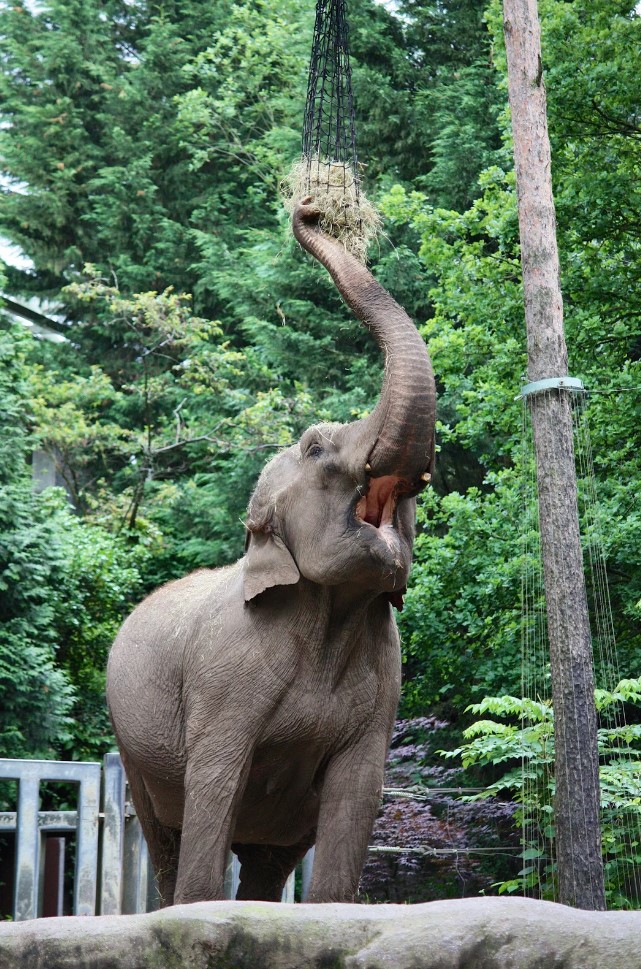
Understanding The Different Types Of Elephants
Elephants are some of the most fascinating animals in the world. They are known for their size, intelligence, and gentle nature. However, many people do not realize that there are actually two different types of elephants: African and Asian. It is important to understand the differences between these two types of elephants in order to appreciate and respect them properly.
African elephants are the larger of the two types of elephants. They can weigh up to 14,000 pounds and stand up to 13 feet tall at the shoulder. They have distinctively large ears that resemble the shape of the African continent. African elephants are found in more than 30 countries in sub-Saharan Africa. They are typically found in grasslands, savannas, and forests.
- African elephants are known for their ivory tusks, which have made them a target for poaching.
- They have a concave back, which makes them distinct from Asian elephants.
- African elephants are social animals and live in herds of up to 100 individuals.
Asian elephants are smaller than their African counterparts. They generally weigh between 5,000 and 11,000 pounds and stand up to 10 feet tall at the shoulder. They have smaller, more rounded ears and a domed head. Asian elephants are found in 13 countries throughout Asia, including India, Sri Lanka, and Thailand. They are typically found in forests, jungles, and grasslands.
- Asian elephants also have tusks, but they are smaller than those of African elephants.
- They have a convex back that makes them look more hump-backed than African elephants.
- Asian elephants live in smaller social groups of up to 10 individuals.
| Characteristic | African Elephant | Asian Elephant |
|---|---|---|
| Size | Larger | Smaller |
| Ears | Large and shaped like Africa | Smaller and more rounded |
| Back | Concave | Convex |
| Social Structure | Large herds of up to 100 individuals | Small groups of up to 10 individuals |
Understanding the different types of elephants is important for conservation efforts. Both species are currently listed as vulnerable on the IUCN Red List, meaning they are at risk of extinction in the wild. Habitat loss, poaching, and human-elephant conflict are some of the greatest threats facing these magnificent animals today. By learning more about them, we can work together to protect and conserve them for future generations.
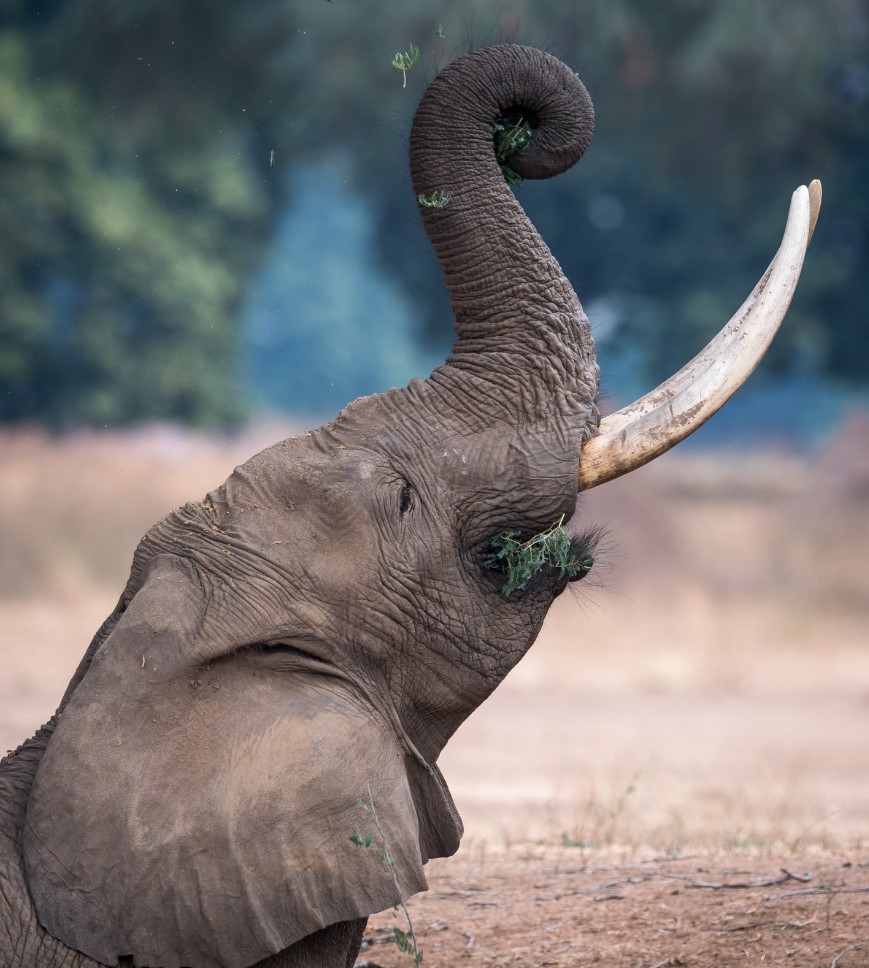
African Elephant Vs. Asian Elephant: The Differences
Elephants are undoubtedly some of the most fascinating creatures on earth. With their incredible size and unique physical features, they have captured the hearts of many. However, not all elephants are the same. In fact, there are two distinct types of elephants: the African elephant and the Asian elephant. Despite sharing some similarities, these two species have some significant differences that make them unique.
African Elephants
The African elephant is the largest land animal in the world, weighing between 5,000 and 14,000 pounds. They are characterized by their massive size, large ears, and curved tusks. One of the most noticeable differences between African and Asian elephants is their ears. African elephants have much larger ears, which they use to regulate their body temperature. They also have two “fingers” at the end of their trunks, whereas Asian elephants have only one.
- African elephants have a concave back while Asian elephants have a convex back.
- African elephants have two finger-like projections at the tip of their trunk and Asian elephants have one.
- Only male African elephants have tusks while both male and female Asian elephants have them.
- African elephants are found in different habitats such as savannas and deserts while Asian elephants can be found in rainforests and grasslands
Asian Elephants
Asian elephants, on the other hand, are slightly smaller with an average weight of 2,000 to 5,000 pounds. They are characterized by their smaller ears, curved spine, and shorter tusks. Unlike African elephants, both male and female Asian elephants have tusks, although the female’s tusks are much smaller.
| African Elephant | Asian Elephant | |
|---|---|---|
| Average weight | 5,000 to 14,000 pounds | 2,000 to 5,000 pounds |
| Ears | Large | Small |
| Back | Concave | Convex |
| Tusks | Only males have them | Both males and females have them, but females are smaller |
While African and Asian elephants may share some physical characteristics, they are two very distinct species. Learning about the differences between these magnificent creatures is essential to understanding and appreciating their uniqueness.
The Evolution Of Elephants: A Brief History
Elephants are one of the largest land animals and have captivated human interest for centuries. They are unique creatures that have evolved over millions of years to become the magnificent animals that we know today. In this blog post, we will dive into the fascinating history of elephant evolution and learn how these gentle giants came to be.
The earliest known elephant ancestors lived around 60 million years ago, during the Paleocene epoch. These animals were tiny, only about the size of a small dog, and had an elongated snout. Over time, elephants evolved to become larger and more mammal-like. They developed bigger brains, flattened molars, and longer legs. By the Eocene epoch, elephants had grown to the size of a modern-day tapir and had two distinctive tusks.
During the Miocene epoch, elephants migrated to different continents, including Europe, Asia, and Africa. They adapted to their new environments, resulting in the emergence of different species of elephants. The mammoth, for example, evolved in the northern regions of Europe and Asia and had a shaggy coat to keep warm in the cold environments. The woolly mammoth, a subspecies of mammoth, evolved in Siberia and had an even thicker coat, adapted to living in ice-covered landscapes.
- Keywords:
- Elephants
- Evolution
- Tusks
- Mammoth
- Miocene epoch
- Adaptations
The modern-day elephant that we are familiar with today is believed to have evolved around 5.5 million years ago, during the Pliocene epoch. There are two main species of elephants – the African elephant and the Asian elephant. The African elephant is the largest land animal and has two large tusks, while the Asian elephant is smaller and has four smaller tusks. Both species have unique adaptations that help them survive in their respective environments.
| Feature | African Elephant | Asian Elephant |
|---|---|---|
| Size | Larger | Smaller |
| Tusks | Two large tusks | Four smaller tusks |
| Ears | Round-shaped ears | Smaller, more pointed ears |
| Trunk | Has two “fingers” at the tip | Has only one “finger” at the tip |
In conclusion, elephants have come a long way in their evolution. From tiny, shrew-like creatures to the massive, intelligent animals we know today, elephants have adapted to a variety of environments and have played important roles in ecosystems throughout history. Their unique adaptations, such as their elongated trunks and impressive tusks, make them fascinating creatures that continue to captivate us today.
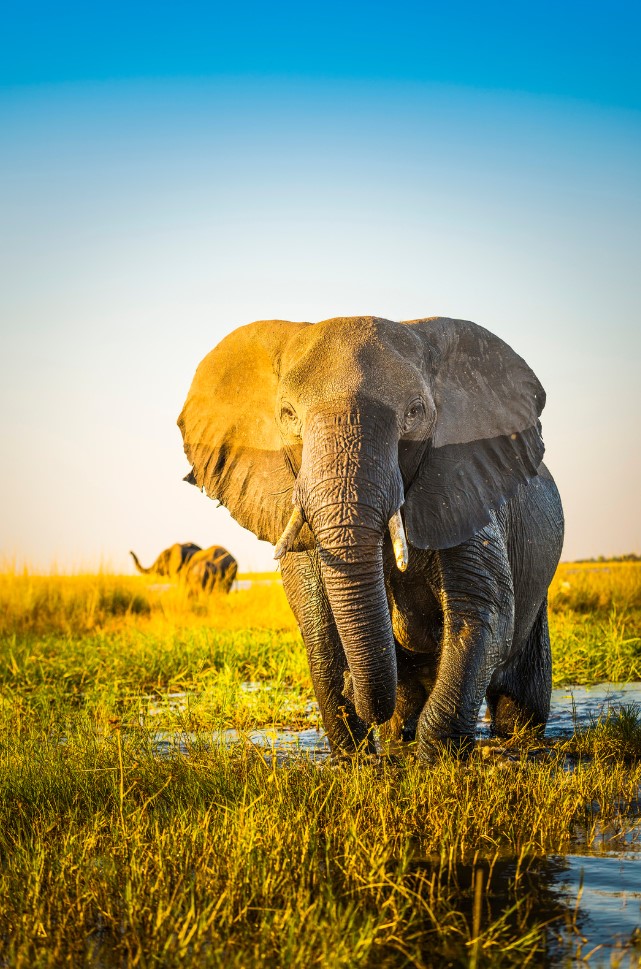
What Makes Elephants So Unique
Elephants are undoubtedly some of the most fascinating animals on Earth. These gentle giants are unique in many ways and possess several features that set them apart from other animals on the planet. From their physical appearance to their behavior and social structure, elephants truly are one-of-a-kind animals. In this blog post, we will explore what makes elephants so unique.
Firstly, elephants have a distinct physical appearance with their long trunks, tusks, and wide, thick ears. Their trunks serve several purposes, from drinking and eating to touching and smelling things. Elephants’ tusks, which are large modified incisors, are also unique to them and serve multiple purposes, such as digging, lifting objects, and fighting. Additionally, elephants have thick, wrinkled skin that helps protect them from the sun and parasites, making them one of the few animals that can survive in hot, arid environments.
- Elephants possess many unique features, including:
- Long trunks, tusks, and thick ears
- Thick, wrinkled skin to protect against the sun and parasites
- A strong social structure and the ability to communicate in various ways
- A long lifespan and the ability to develop strong, long-lasting bonds with other elephants
Aside from their physical characteristics, elephants also have a unique social structure and the ability to communicate with each other in various ways. They are highly intelligent animals capable of complex emotions and social interactions, making them one of the few species that have been observed to exhibit empathy, self-awareness, and even grief. Additionally, elephants are known to develop strong, long-lasting bonds with other elephants, including their family members and herd mates.
| Elephant Fun Fact: | Elephants have the longest gestation period of any land animal, lasting up to 22 months! |
|---|
Finally, elephants have a long lifespan compared to other animals, with some living up to 70 years in the wild. This longevity, combined with their unique social structure and behavior, makes them a keystone species and an essential part of many ecosystems in Africa and Asia.
So what makes elephants so unique? It’s their blend of physical characteristics, social behavior, and emotional intelligence. As we continue to discover new information about these magnificent creatures, we will undoubtedly uncover even more reasons why they are so special.
Amazing Elephant Adaptations For Survival
Elephants are magnificent creatures that have managed to survive and thrive for millions of years. Part of the reason for their success lies in the amazing adaptations that they have developed over time. These adaptations have allowed elephants to survive in some of the harshest environments on Earth.
One of the most notable adaptations of elephants is their large, floppy ears. These ears may seem cumbersome, but they actually serve a specific purpose. Elephants live in hot environments, so their large ears help to regulate their body temperature. Blood vessels in the ears expand when the elephant is hot, allowing more heat to escape. Conversely, when the elephant is cold, these blood vessels constrict, reducing the amount of heat loss.
- Another adaptation that elephants have developed is their long trunks. These trunks are incredibly versatile and can be used for a variety of tasks. Elephants use their trunks to breathe, smell, drink, and even manipulate objects. In fact, their trunks are so adept that they can pick up small objects like a single blade of grass.
- Elephants also have thick skin, which helps to protect them from predators and the harsh environment. However, their skin is not just thick, it’s also incredibly sensitive. Elephants use their sensitive skin to detect even the slightest changes in their environment. They can pick up on vibrations in the ground and even communicate with other elephants through touch.
| Adaptation | Purpose | Example |
|---|---|---|
| Large ears | Regulate body temperature | Expand to release heat in hot environments |
| Long trunks | Multi-purpose tool | Pick up small objects like a blade of grass |
| Thick, sensitive skin | Protection and communication | Detect vibrations in the ground and communicate with other elephants through touch |
These adaptations have allowed elephants to survive and thrive for millions of years. However, this doesn’t mean that they don’t face challenges. Many elephant populations are currently under threat from habitat loss, poaching, and other human activities. It’s up to us to help protect these incredible animals so that they can continue adapting and thriving for years to come.
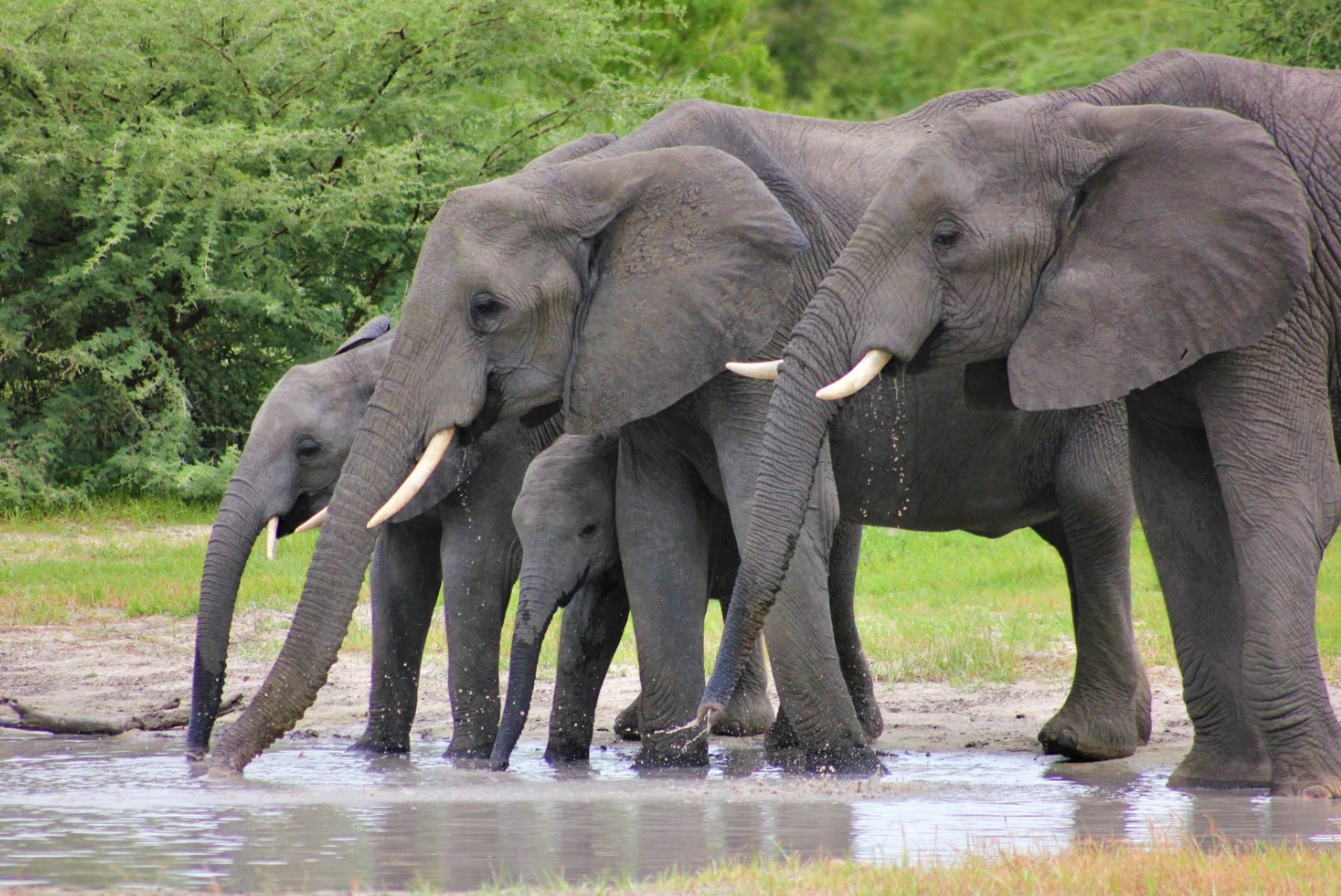
The Importance Of Elephants İn Ecosystems
Elephants have always been viewed as strong and majestic creatures. Their sheer size and power have captivated the imagination of people from all over the world. However, what many people fail to recognize is the critical role that elephants play in ecosystems. In fact, elephants are often called “keystone species”, meaning that without them, entire ecosystems could crumble.
One of the most important ways in which elephants impact ecosystems is through their grazing habits. Elephants are known to consume vast amounts of vegetation, which helps to keep the growth of trees and shrubs in check. This, in turn, promotes the growth of various grasses and herbs, which provide food for other herbivores. Furthermore, the holes that elephants dig while foraging for water can even create habitats for other animals, such as insects and small reptiles. Elephants are also known to disperse seeds across long distances, which helps to promote biodiversity and prevent the buildup of invasive species.
- Did you know that elephants can consume up to 600 pounds of vegetation in a single day?
- Fun fact: Elephants are also known to eat the bark and branches of trees, which can actually help to stimulate new growth and provide nutrients for other animals.
In addition to their impact on plant life, elephants also play an important role in shaping the landscape of ecosystems. Elephants are known to dig, break, and push down trees and other obstacles as they move about. This can create pathways for other animals to move through, and even create new habitats for certain species. Elephants are also known to drink immense amounts of water, which can help to create watering holes and support the growth of aquatic ecosystems.
| African Elephants | Asian Elephants |
|---|---|
| African elephants are larger and have larger ears. | Asian elephants are smaller and have smaller ears. |
| African elephants have two “fingers” on the end of their trunks, while Asian elephants have only one. | Asian elephants are often used as working animals, while African elephants are not. |
The conservation of elephants is therefore essential for maintaining the balance of ecosystems. However, elephants are currently under threat due to habitat loss, poaching, and human-elephant conflict. As such, it is important for us to take action to protect these magnificent creatures and ensure that they continue to play their vital role in ecosystems for years to come.
Elephants And Human Interaction: The Controversies
Elephants have been a part of human culture for centuries. From being trained as work animals, to being shown off in circuses, their interaction with human beings has been both beneficial and controversial. While elephants can be trained to perform various tasks, the use of cruel training methods has raised concerns over the welfare of the animals. Additionally, the use of elephants in tourism has been a major issue, as there have been numerous cases of mistreatment of elephants in the industry.
One of the biggest controversies surrounding elephants in human interaction is the use of them in the entertainment industry. While circuses and theme parks use elephants for entertainment purposes, there have been concerns over the welfare and safety of the animals. In many cases, elephants are forced to perform unnatural behaviors through cruel training methods which involve physical punishment. This not only harms the physical and emotional well-being of the animals but also poses a risk to trainers and the general public.
Another area of controversy is the use of elephants in tourism. Many countries rely on elephant rides and shows as a major source of tourism, but the conditions in which these animals are kept have been questioned. Elephants are often subjected to long hours of work, harsh conditions, and even abuse to keep them under control. This treatment not only affects the elephants’ welfare but also goes against the principles of responsible tourism.
- One way to address this issue is by supporting responsible tourism that does not involve the exploitation of elephants. Instead, tourists can visit sanctuaries where elephants are allowed to roam freely, and interact with them in a more ethical way.
- Another solution is to promote education and awareness about the plight of elephants in the entertainment industry and tourism. By raising awareness, people can make informed decisions about their interactions with elephants and promote their welfare.
Last but not least, the use of elephants in religious ceremonies has also been controversial. Elephants are considered sacred animals in many cultures and are used in various ceremonies and processions. While many of these ceremonies are meant to honor the animals, there have been instances of cruelty and exploitation. Elephants have been subjected to long hours of standing and walking in parades, loud noises, and crowds of people, which can be stressful and even dangerous for them.
| Controversies Facing Elephants and Human Interaction |
|---|
| Use of elephants in entertainment industry |
| Use of elephants in tourism |
| Use of elephants in religious ceremonies |
| Cruel training methods affecting elephants’ welfare |
| Promoting responsible tourism and awareness about the plight of elephants |
In conclusion, elephants’ interaction with human beings has been a subject of controversy for many years. While they have played an important role in human culture, the way in which they are treated has raised ethical concerns. It is important to promote responsible tourism, raise awareness, and support ethical treatment of these magnificent animals.
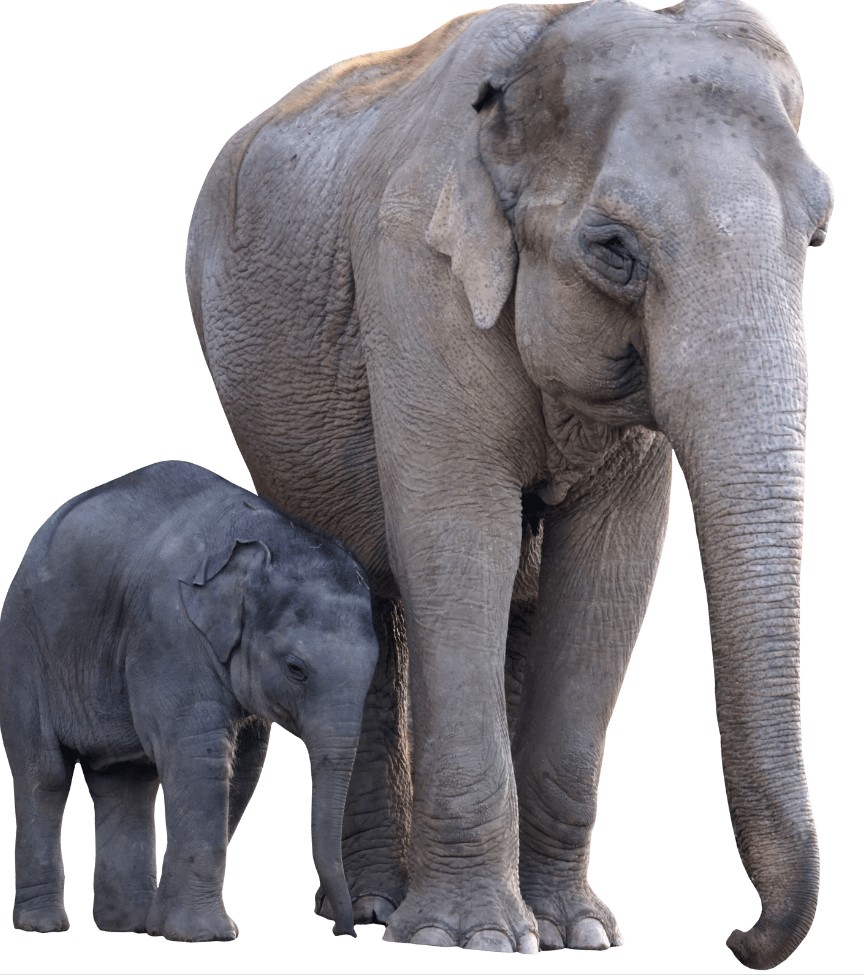
Elephants İn Popular Culture: From Cartoons To Mythology
Elephants are one of the most beloved animals in popular culture, with their unique appearance and gentle demeanor. They have been featured in a variety of media, from cartoons to mythology, and their presence has left a lasting impression on audiences worldwide. It is no wonder that elephants have become a significant part of popular culture, as they are intelligent, majestic creatures with a fascinating history.
From early childhood, many of us were introduced to elephants through cartoons and children’s books. Cartoons like Dumbo and Babar have brought elephants to life in a way that is both entertaining and educational. They have helped to create an enduring image of elephants as intelligent, compassionate creatures that are always ready to help those in need. Elephants have also made their way into mythology, serving as powerful symbols of strength and wisdom.
In Hinduism, the elephant god Ganesha is one of the most revered deities. He is known as the god of wisdom and learning and is often depicted with an elephant head. Ganesha’s story is one of overcoming obstacles, and he is believed to help his followers do the same. Elephants are also portrayed in African mythology as powerful and wise creatures that guide humans through life’s journey.
- Elephants in popular culture are often portrayed as gentle giants, but they are also fiercely protective of their young and can be formidable foes when threatened.
- Elephants have also been used in literature, including Ernest Hemingway’s The Old Man and the Sea, where they are used to symbolize the power and mystery of the sea.
- In popular culture, elephants have been used to represent everything from strength and loyalty to intelligence and resilience.
Despite the wide range of interpretations and portrayals of elephants in popular culture, one fact remains clear: these amazing animals have captured the hearts and imaginations of people around the world. Whether it’s through cartoons or mythology, literature or film, elephants continue to inspire us with their beauty, strength, and wisdom. As we continue to learn more about these remarkable creatures, it is clear that their impact on popular culture will only continue to grow.
Elephants İn Conservation: Endangered Or Threatened?
Elephants are some of the most majestic and awe-inspiring animals on the planet. Unfortunately, due to habitat loss, poaching, and human encroachment, elephant populations have been declining at an alarming rate. There are two species of elephants: the African and the Asian. Both species are threatened with extinction and conservation efforts have become increasingly important to protect these gentle giants.
- The African elephant is the largest living land animal in the world and can weigh up to 14,000 pounds.
- The Asian elephant is slightly smaller and can weigh up to 11,000 pounds.
- Both species play a crucial role in maintaining healthy ecosystems.
- Elephants help to disperse seeds, create paths for other animals, and maintain the health of forests and grasslands.
Despite their importance, elephants face many threats to their survival. Poaching for ivory is one of the biggest threats to both African and Asian elephants. Their tusks are highly valued in many cultures, and poachers are willing to risk their lives to obtain them. Habitat loss is also a major threat to their survival. As human populations continue to grow, elephants are losing critical habitat and are often forced to compete with humans for resources.
| African Elephant | Asian Elephant |
|---|---|
| Predominantly found in savannas and grasslands | Predominantly found in forests and hills |
| Longer tusks | Shorter tusks |
| Larger ears | Smaller ears |
Conservation efforts have become increasingly important to protect elephant populations. Many organizations are working to protect elephants and their habitats, while also raising awareness about the importance of conservation. In many areas, anti-poaching patrols are being established to protect elephants from poachers. Additionally, habitat restoration projects are being undertaken to ensure that elephants have the resources they need to survive.
In conclusion, elephants are facing numerous threats to their survival, including poaching and habitat loss, making it crucial to preserve and protect them. We must continue efforts towards conservation to ensure that future generations have the opportunity to appreciate these incredible animals in the wild.
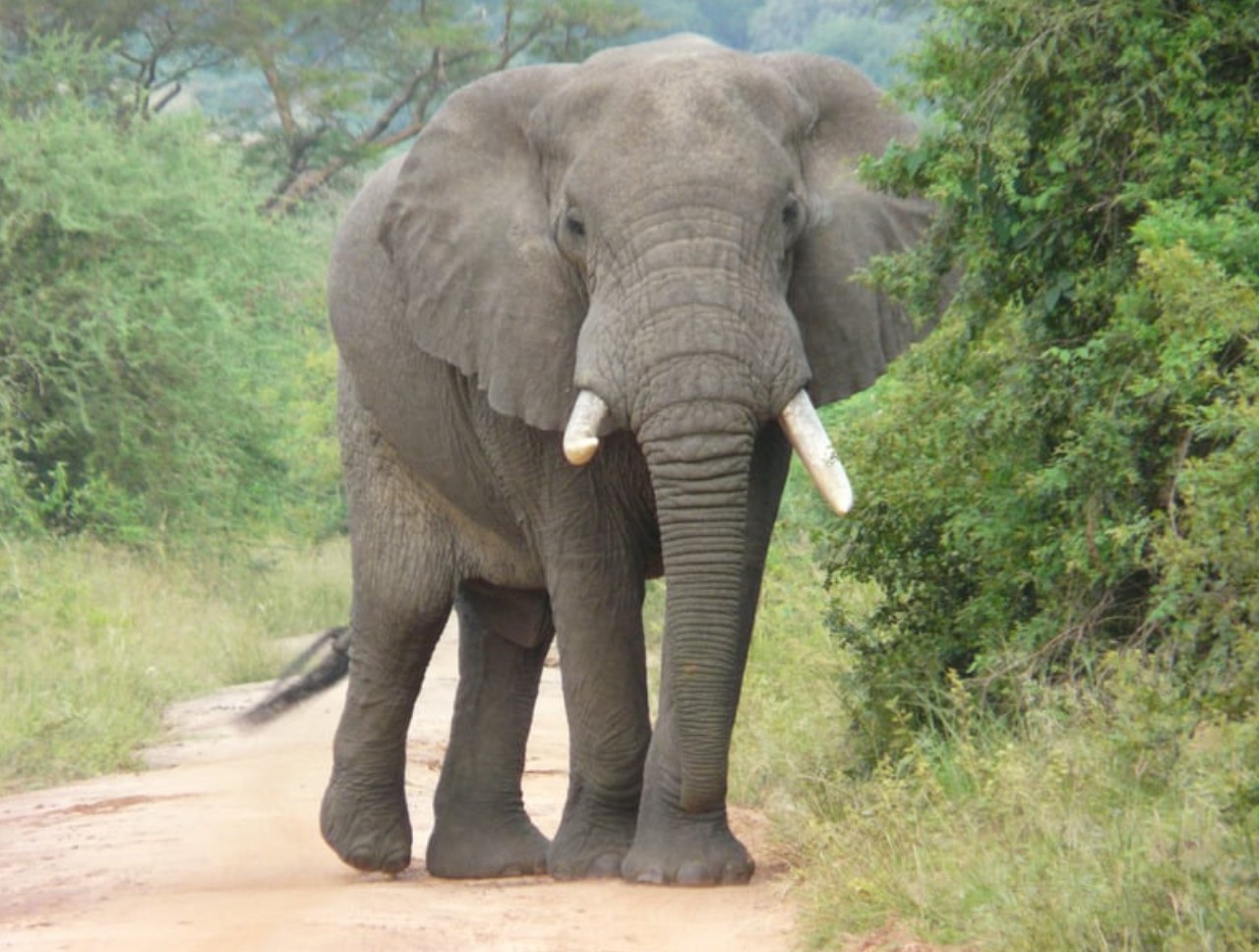
The Role Of Elephants İn Tourism
Elephants have always been an integral part of the tourism industry, especially in some parts of Asia and Africa where elephant-back safaris and rides have become a popular tourist activity. Despite the increasing awareness surrounding animal welfare and conservation, elephant tourism continues to thrive, and there are mixed opinions about its impact on these gentle giants.
On one hand, elephant tourism provides employment opportunities and brings money to local communities, thereby contributing to the economy of the region. For many people, elephant rides and safaris are a once-in-a-lifetime experience that creates lasting memories.
- However, the harsh reality is that many elephants used in tourism are subjected to immense physical and psychological pain.
- Due to the high demand for elephant rides and safaris, many captive elephants are overworked and exploited, carrying tourists on their backs for long hours without rest.
- Furthermore, capturing and training elephants for tourism purposes often involves cruel and inhumane practices, such as separating baby elephants from their mothers and chaining them up.
The welfare of elephants used in tourism has been a matter of concern for animal welfare organizations and activists. The negative impact of elephant tourism on elephant populations has also raised debates on its sustainability in the long run.
| Pros | Cons |
|---|---|
| Employment opportunities for locals | Physical and psychological pain for elephants |
| Contributes to the economy of the region | Cruel capturing and training practices |
| Provides a memorable experience for tourists | Debates on the sustainability of elephant tourism |
Efforts are being made to promote responsible elephant tourism, such as elephant sanctuaries that offer visitors opportunities to observe elephants in their natural habitats without exploiting them. Education and awareness about elephant welfare is also crucial for making informed choices about the tourism activities one takes part in.
In conclusion, the role of elephants in tourism cannot be denied. However, it is essential that the welfare of these gentle giants is prioritized over profit, and responsible tourism practices are employed to ensure their survival in the wild.
Elephant Intelligence: What Science Tells Us
Elephants are known as one of the most intelligent animals on the planet. They are highly social creatures, with complex communication and problem-solving abilities. Scientists have dedicated significant time and resources to studying elephant intelligence, and their findings offer insight into the remarkable cognitive abilities of these fascinating creatures.
One of the key ways that scientists have studied elephant intelligence is through their ability to problem-solve. Elephants have been observed using tools, such as using sticks to scratch themselves or pull branches within reach. They have also been found to recognize themselves in mirrors, a trait that is typically associated with self-awareness.
Another important aspect of elephant intelligence is their communication. Elephants are known for their ability to communicate with each other using a variety of vocalizations, as well as physical cues such as body language and touch. It is thought that these complex communication abilities play a role in their social cohesion and cooperation within their herds.
- Intelligence can be viewed in many different ways
- Elephants have shown remarkable abilities in problem-solving
- Self-awareness is one example of elephant intelligence
- Communication is another key area of elephant intelligence
| Species | Brain Size (in kg) | Relative Brain Size |
|---|---|---|
| African Elephant | 5.5 | 0.86 |
| Asian Elephant | 4.2 | 0.66 |
Interestingly, when compared to other animals, elephants have some of the largest brains in the animal kingdom. Their brains are highly developed, with specialized regions for memory, spatial awareness, and social behavior. However, brain size alone is not the only measure of intelligence, and further research is needed to fully understand the extent of elephant cognitive abilities.
Overall, the science tells us that elephants are highly intelligent creatures with a range of cognitive abilities. Their remarkable problem-solving skills and communication abilities set them apart from other animals, making them one of the most fascinating species on the planet.
Elephant Reproduction: Mating And Offspring
Elephants are majestic creatures that have always fascinated us with their massive size and gentle nature. They are the largest land animals in the world and have a unique social structure that makes them even more intriguing. But today, we will learn about another aspect of these magnificent beasts- their reproduction process. Elephant Reproduction: Mating And Offspring is what we will cover in this blog post.
Elephants are polygamous animals, which means that they mate with more than one partner in their lifetime. The mating season for elephants varies depending upon the location and habitat. In African elephants, the mating occurs during the rainy season while in Asian elephants, it occurs during the monsoon season. During this time, male elephants engage in fierce battles with one another to win the female’s affection.
- The gestation period of female elephants is 22 months, which is the longest of any mammal on earth!
- Once the gestation period is over, a baby elephant calf is born which weighs around 120 kg and stands at a height of around 1 metre.
The mother elephant takes care of the calf intensely while other females in the group help her. The calf is fed on the mother’s milk for the first two years after which it is weaned off. Interestingly, female elephants are sexually mature by the age of 8-10 years, whereas males reach maturity at the age of 12-14 years.
| Interesting Facts About Elephant Reproduction | |
|---|---|
| Elephant bulls can detect a female’s reproductive state from miles away. |  |
| Elephants mate and give birth only in safe environments, which means that poaching and human interference can greatly affect their reproductive cycle. |  |
Elephants are known to be extremely intelligent and emotional animals. Their social structure is complex and revolves around the care of their offspring. The bond between a mother elephant and her calf is one of the strongest in the animal kingdom. Unfortunately, their reproductive cycle is under threat due to various factors like habitat loss, poaching and human interference. Therefore, it is essential that we protect these gentle giants and conserve their habitat for future generations to come.
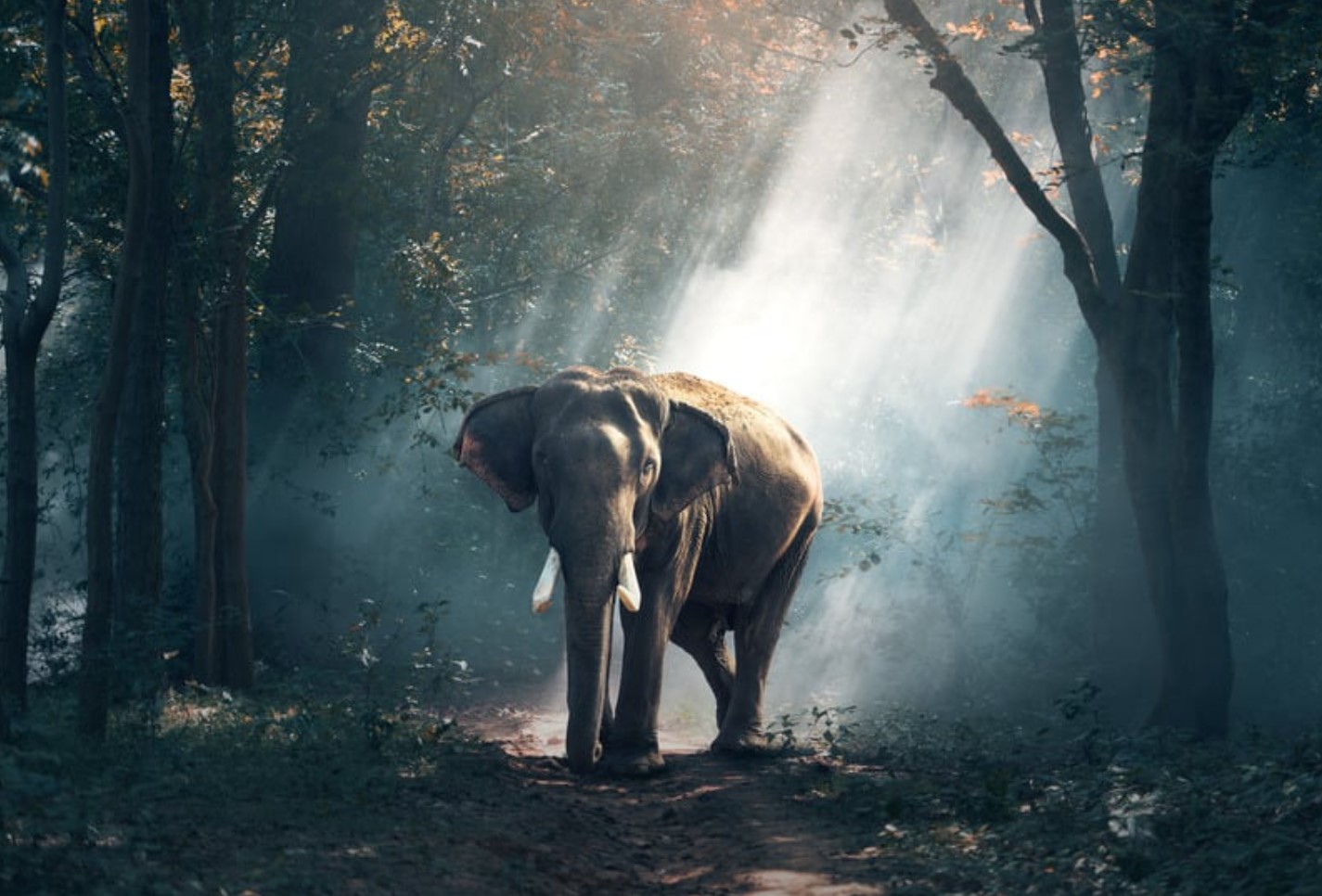
Multifaceted Communication İn Elephants
Elephants are known to be intelligent, sociable, and communicative creatures. They have a wide range of vocalizations, body gestures, and chemical signals to express their emotions, needs, and intentions. Their multifaceted communication skills are essential for their survival and reproduction in the wild.
The trunk of an elephant is a versatile tool that can emit various sounds, such as trumpets, grunts, growls, and purrs. These vocalizations can convey different meanings, depending on the context and tone. For example, a loud trumpet may warn others of danger or assert dominance, while a soft purr may comfort a calf or signal friendliness.
- Elephants also use their bodies to communicate with each other. They have a complex system of postures, gestures, and displays that can convey subtle nuances of emotion, mood, and intention. For instance, raising the trunk high can show excitement or aggression, while curling it downwards can indicate submission or sadness.
- Moreover, elephants use pheromones and other chemical signals to communicate with their peers. They can release a variety of scents from their temporal glands, urine, and feces, which can convey information about their reproductive readiness, social status, or identity. They can also use chemical signals to mark their territories, trails, or food sources, which can help them navigate and avoid conflicts.
The communication skills of elephants are not only fascinating but also crucial for their survival and well-being. Unfortunately, their ability to communicate is often disrupted by human activities, such as poaching, habitat loss, and captivity. It is important for us to appreciate and respect the complexity of elephant communication and work towards their conservation and protection.
Elephant Migration: Why Do They Move?
Elephants are undoubtedly one of the most fascinating animals on the planet, and their migration patterns are no exception. While many animals migrate in search of warmer climates or better feeding grounds, elephants migrate for other reasons entirely. But just what exactly drives these massive mammals to move such great distances? Let’s take a closer look at elephant migration and why it is so important to their survival.
Elephant Herds and Social Structure
At the heart of elephant migration is the herd. Elephants are highly intelligent and social animals that live in close-knit groups typically led by a matriarch. These matriarchs are essential to the group’s survival, leading them to sources of water and food and offering protection when necessary.
However, as the dry season sets in and food and water become scarce, elephant herds must move in search of new resources. During these migrations, herds can travel distances of up to 100 miles or more. This journey can take many months and involves navigating through unfamiliar terrain and crossing dangerous obstacles like rivers and ravines.
The Importance of Migration for Elephant Survival
Migrating is an essential tool for elephants to ensure their survival. By moving from place to place, elephant herds can avoid overgrazing in one area and allow that region’s vegetation to regrow. This not only benefits the elephants but also ensures that other animals dependent on that vegetation can thrive.
Migrating also allows elephants to seek out new sources of water, avoiding drought conditions that can lead to dehydration and even death. Additionally, by moving often and covering great distances, elephants are less likely to become prey to predators. This constant motion keeps them on the move and out of harm’s way.
Conclusion
Elephant migration is a complex and essential process that is vital to the survival of these magnificent animals. Without the ability to move to new areas to find food and water, herds would face certain death. Migration keeps populations healthy and thriving, ensuring the future of these intelligent and social animals for generations to come.